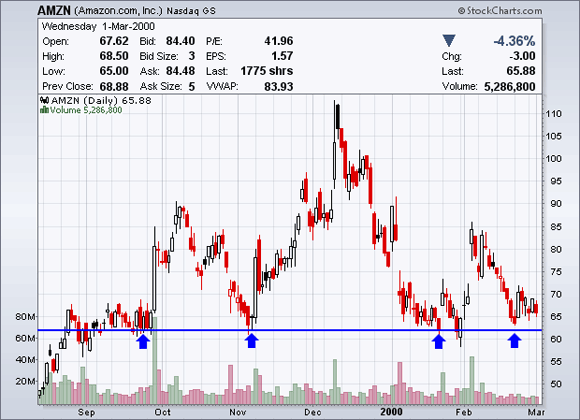Support and resistance lines can help investors decide at what price to buy or sell a stock. As a stock drifts towards support and gets cheaper, buyers will become more inclined to buy and sellers become less inclined to sell. Conversely, as a stock drifts towards resistance and becomes more expensive, buyers will become less inclined to buy while sellers become more inclined to sell.
Support levels are established when a stock falls to a certain point and then bounces upward. If the stock price begins to fall again after the bounce, the previous point of reversal serves as support. It is not uncommon for a stock to make several bounces on a support level such as the example shown below.

Keep in mind that technical analysis is not an exact science, making it impossible to set exact support levels. Price movements can sometimes be volatile and dip below support temporarily. However, support lines can break and when they do another support level will have to be established at a lower level.
Resistance levels are established when a stock rises to a certain point and then declines. If the stock bounces and begins to incline, the previous point of reversal serves as resistance. As with support lines, resistance lines can break and when they do another support level will have to be established at a higher level.

A principle to remain aware of is that support can turn into resistance and resistance can turn into support. For instance, once a stock’s price breaks above a resistance level, the broken resistance level can turn into support. In the example below you can see how the high made in January of 2007 served as a support level in November and December.

Understanding where important support and resistance points are should affect where you decide to buy or sell a stock. Remember though, a stock won’t always bounce directly on the support line. If you feel confident about a certain stock, rather than trading at the support or resistance level, adjust your order slightly to ensure a transaction.

